Canadian Rockies – Page 03
Banff
We arrived at the Mount Royal Hotel in Banff in late afternoon of Day 5 after a 320 mile poke from Waterton Lakes. It was a long day on the bus, but we broke it up with potty stops and talks about the area by Suzanne.
Here is an aerial view of Banff and Cascade Mountain. That’s the Bow river in the foreground. It’s the same river that flows through Calgary to the east. Tunnel Mountain is on the left. There is a gondola ride there to the summit.
This was the view looking south from Banff Street. The veiw of Cascade Mountain was spectacular, it dominates the town!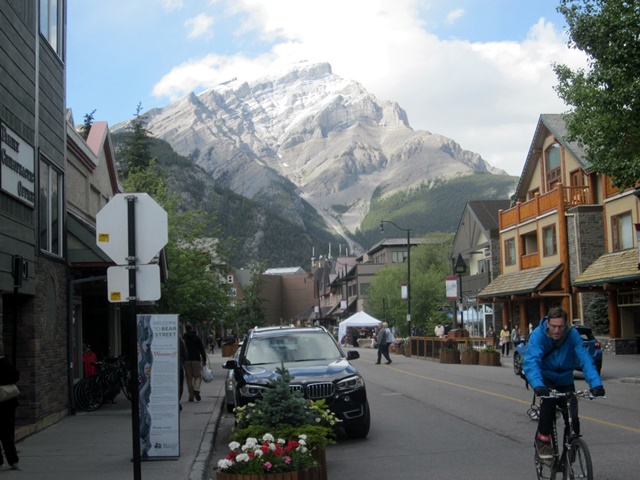
Our hotel room faced Tunnel Mountain. In the AM, snow covered the peaks. In the PM, it was all gone.
Since we arrived late, we had dinner “on our own” at Mc D’s.

On Day 6 we had a bus tour of the Banff area driven by our very able bus driver: Neil Hartley. He was from the Vancouver area and he drove the bus from there to Calgary to meet us. He drove us over 2000 miles through some tricky mountain areas. We didn’t go off the road once! Although, he and Suzanne had dueling GPS’s and a few times we got a little lost. No Problem!!
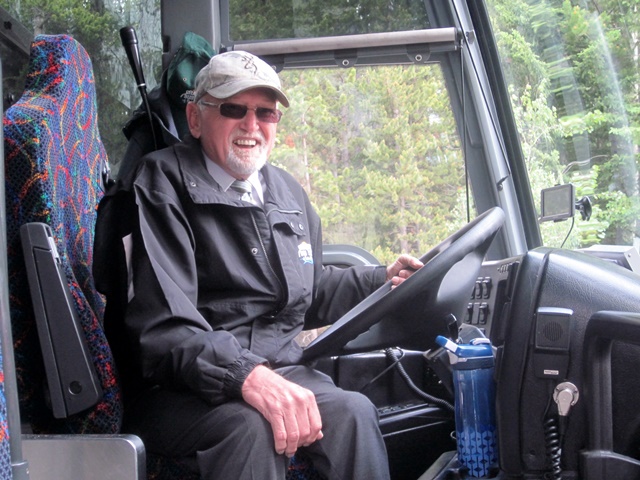
We stopped briefly at the Banff Fairmont Hotel for a quick squint at how the other half lives.
The Banff Springs Hotel was officially opened on June 1, 1888. The newly appointed Canadian Pacific Railroad president William Cornelius Van Horne had personally chosen the site in the Rocky Mountains for the new hotel, and he envisioned a string of grand hotels across Canada that would draw visitors from abroad to his railway.
The original Banff Springs Hotel, though much smaller than the present hotel, became such an immediate hit among tourists of the 1880s, the CPR encouraged the federal government to establish Canada’s first national park in the territory surrounding it; eventually leading to a network of national parks across the nation.

We visited the Banff version of “hoodoo’s” There are other spectacular “hoodoos” in Bryce Canyon in the US and even a few above Bolzalmo in northern Italy. They are interesting formations caused by a resistant rock covering some eroding softer rock. That’s the Bow River in the background.
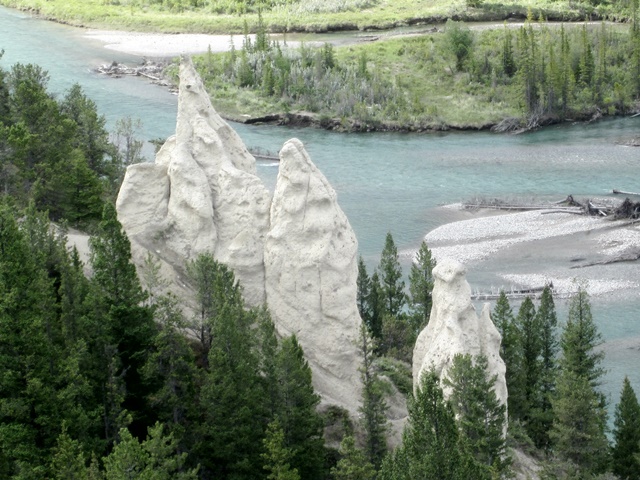

After a couple more scenic stops, we headed back downtown for lunch (on our own) and in the afternoon we visited the Whyte Museum in Banff and two adjacent historic homes.

There were several rooms of early Banff artifacts and pictures and an art gallery (which was closed for some work).

On the grounds of the museum stands the Moore Residence. In 1907 Philip Moore and Pearl Brewster Moore built this home on Banff Avenue, the same year they wed. In 1889 Pearl was reportedly the first white child born in Banff.
The Moores traveled the world extensively and amassed a collection of native artifacts that adorn this home, along with artifacts relating to the region’s history. Pearl donated the house and its contents to the Whyte Museum after her husband died.
The Moore house is loaded with interesting old stuff.
Next door to the Moore home is the Peter and Katharine White house. Peter and Catharine moved into this rustic log home and studio they built between Banff and the Bow River. The couple spent significant time together hiking in the mountains and painting.

Today, this cozy cabin has been enlarge (sorry, no photo) and now contains contains most of their household goods plus a big studio for their painting. Here is a bit of the original cabin with one of their paintings:

After an afternoon at the museums, Mary Ann and I walked around town and dined at Tim Hortons (“on our own”) then returned to the hotel and watched “Jaws 2” on the TV.
On Day 6, after a nice buffet breakfast at the hotel, we boarded the bus for a 5 minute drive the the Buffalo Nations Luxton Museum.

There we met our guide (sorry, lost his name). He did some amazing things with his musical bow/pipe and introduced 3 First Nation costumed dancers (his daughters?) who performed dances to the beat of a drum and a wailing song.
He also told us interesting stories about the First Nation people and explained the many excellent displays.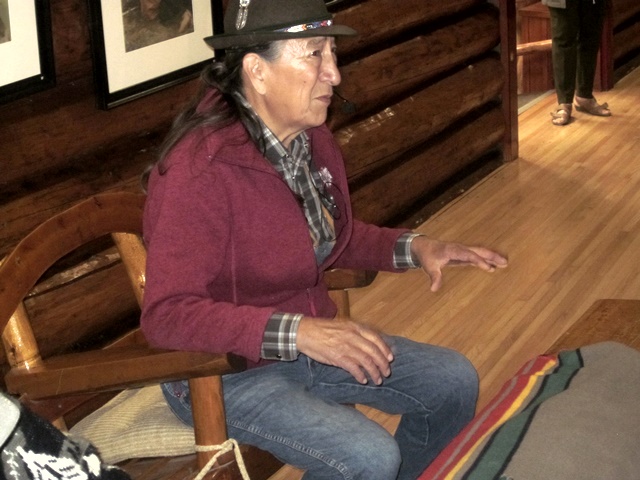
Here is one of his pretty daughters after she changed from her dance costume:
A visit the Buffalo Nations Museum is a to return to the days when the horse first arrived on the plains, and when Europeans discovered Native cultures rich in elaborate ceremonies, dances, songs, and legends. From richly ornamented costumes to beautifully decorated tipi’s, from colorful quill work to hunting equipment, the Museum displays a wealth of Native artifacts and collections. It is a cultural celebration of the richness, diversity, and above all, the resilience of the First Nations Peoples.
Here are some pictures of the displays:
Inside a tipi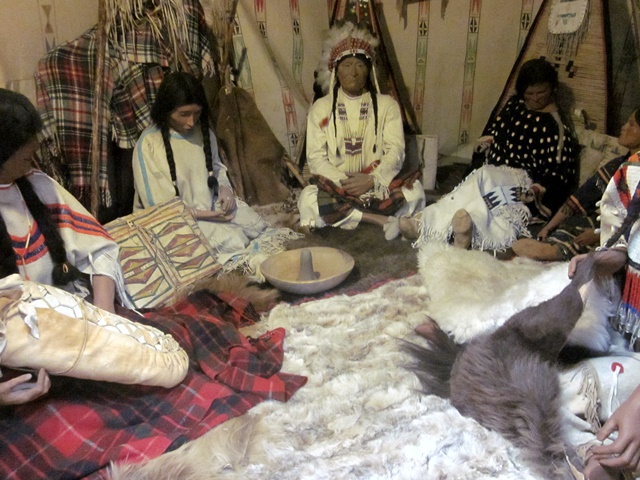
Big family. Note the baby. He/she is being packed in a moss diaper and wrapped in a soft baby buffalo skin.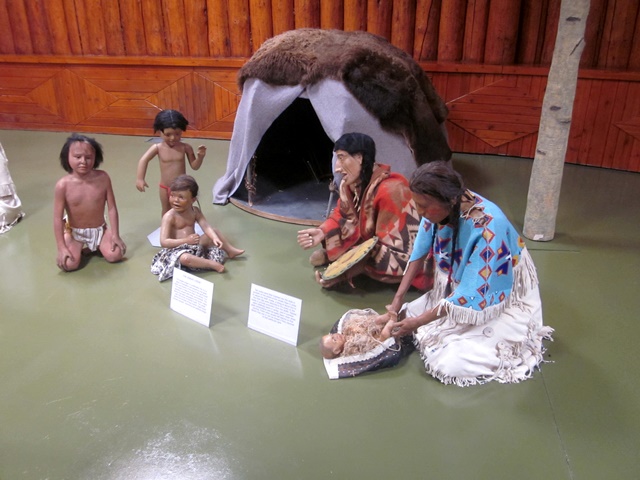
Some sort of a warrior bravery ritual 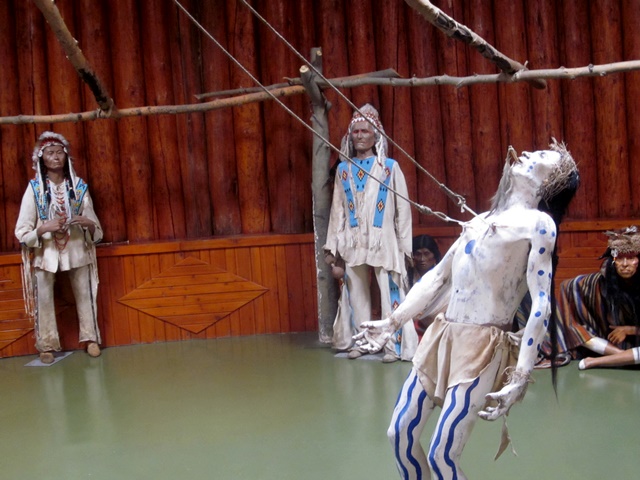
Buffalo hunting. Our guide said that this was a misleading display. Indians rarely shot buffalo with arrows. They prefered to drive them over a cliff – called a buffalo run. Note the baby buffalo. He’s destine to become a baby blanket (nice soft hide).
One final museum picture: This is “smudge” . Mystics say the Native American practice of smudging, or purifying a room with the smoke of sacred herbs, can help clear negative energy from a space. And the apparent benefits are steeped in science—when burned, sage and other herbs release negative ions, which research has linked to a more positive mood.
The use of incense and other smoke and vapor to connect humans to the spirit world, can be easily traced throughout the East in parts of Asia and even dating as far back to Ancient Greece.
Closer to our home in Maine, we met an Abnaqui indian at the base of Mout Agamenticus in York, Maine who was burning a smudge in a hidden ancient Abnaqui warrior cemetary there in the woods. That was nearly 2000 miles from Banff!! Same ritual!!
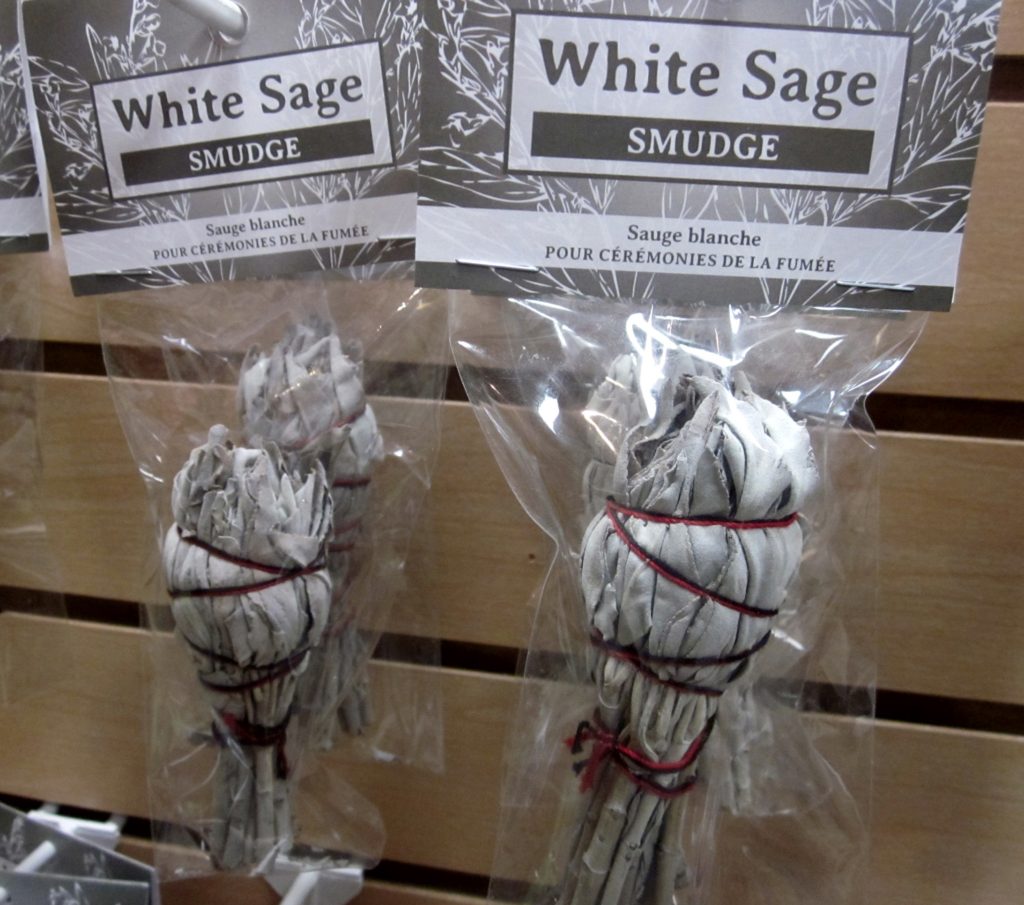
We left the museum and headed east to the Stoney Lakota Reservation with our museum guide. We left the mountains and headed out onto the prairie.
The Nakoda (also known as Stoney) are an indigenous people in Western Canada and, originally, the United States. They used to inhabit large parts of British Columbia, Alberta, Saskatchewan, and Montana, but their reserves are now located in Alberta and in Saskatchewan.
They refer to themselves in their own language as “Nakoda”, meaning friend, ally. The name “Stoney” was given them by white explorers, because of their technique of using fire-heated rocks to boil broth in rawhide bowls.
We enjoyed a nice lunch (on GCT) at the new Stoney Ridge Buffet near the resevation. (The old restuarant was recently destroyed by fire by vandals.)
The actual reservation is nearby. It’s a rather desolate place with few natural resources. Mostly modest homes, a church, and many trailers, a new school, and assorted government buildings.
Apparently there is a huge opiate problem with many deaths attributed to overdoses of “bad” drugs.
Here is another picture of the reservation. It’s kinda sad!
After a drive back to Banff, we went out on our own and visited the Park Museum. This is a small museum dedicated to local wildlife.
The museum was established in 1895 to house an exhibit of taxidermy mounted specimens of animals, plants and minerals associated with the park. The museum building, constructed in 1903 to the design of territorial government engineer John Stocks, is an early example of the rustic style of architecture that was becoming popular in the parks of North America.
The building, described as a “railway pagoda”, uses exposed log framing and rustic detailing. It is the oldest building maintained by Parks Canada.
I think it was constructed using local Fraser Fir.

The museum is illuminated with natural light from the high windows above.
Here is more wildlife in the museum: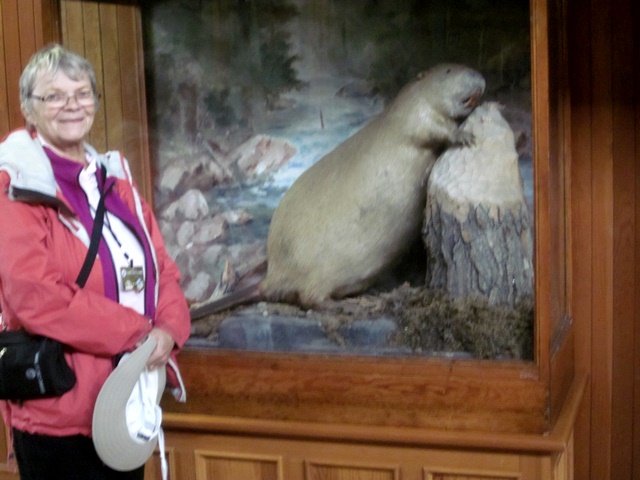
We hung out in town for the rest of the afternoon and had dinner in a Chinese “take away” in a the food court of the Cascade Plaza mall (on our own). This was our second dinner there. Cheap and hot.

We returned to our hotel to pack and get ready for Day 8 drive to Jasper.
Here is our Mount Royal Hotel: Nice hotel!
Go To Page 4



























